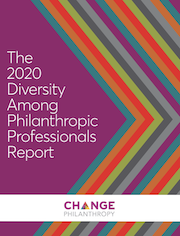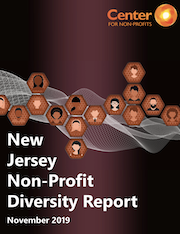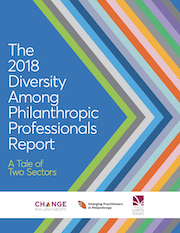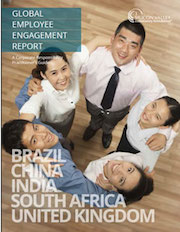Site Search
- resource provided by the Forum Network Knowledgebase.
Search Tip: Search with " " to find exact matches.
We are pleased to share the 2022 Newark Philanthropic Liaison Report to the Field. The role continues to demonstrate meaningful impact in Newark while serving as a model to other cities and states across the country interested in deepening the intentionality of public-private partnerships.
We are pleased to share the Newark Philanthropic Liaison's latest Report to the Field. In 2023, we were proud of the multiple opportunities we had to spotlight the Council of New Jersey Grantmakers' leadership in starting and continuing this innovative model. Partners from across the country, from Philanthropy Serving Organizations (PSOs) to state and local governments, are considering the creation of a role similar to the Newark Liaison. Now more than ever, it is through partnerships that we will achieve our biggest collective goals in our sector.
We are pleased to share CNJG’s 2021 Newark Philanthropic Liaison Report to the Field. First established in 2007, the Liaison office represents one of the nation’s first formal partnerships between a city and the philanthropic community. The initiative began as a partnership between the Council of New Jersey Grantmakers in collaboration with then Mayor Cory A. Booker. We are proud this unique partnership has continued with Mayor Ras J. Baraka and his administration.
This report provides a brief summary of the substantial activities and impact the Office of the Newark Philanthropic Liaison facilitated throughout 2021. The strategy of collective impact is thriving throughout Newark thanks in large part to the work of the Liaison, and the funding community’s support of and robust engagement with the Office of the Mayor and anchor institutions across the city continue to reap positive outcomes. The Office of the Newark Philanthropic Liaison is supported by: Bank of America, Burke Foundation, Geraldine R. Dodge Foundation, Maher Charitable Foundation, The Prudential Foundation, Schumann Foundation for New Jersey, Turrell Fund, Victoria Foundation, and the longtime support of the Nicholson Foundation which sunset in late 2021.
Please show your support of CNJG by displaying the following "Proud Member" graphic on your website, in social media posts, on publications, and in other communication efforts as appropriate.

This second edition of the Diversity Among Philanthropic Professionals (DAPP) Report offers a snapshot of the philanthropic sector’s workforce in a very specific space and time — in the chaotic year that was 2020. The DAPP report aims to help the philanthropic community better understand its workforce and leadership. It is unique in soliciting anonymous self-reporting from individuals on the staff and board of participating foundations, helping grantmakers to accurately assess the culture and climate of their institutions.
Our Report to the Field for 2024 showcases an array of examples of public private partnerships launched in Newark with the collaboration of multiple partners. The Liaison led efforts to secure new funds for innovative solutions to homelessness, new approaches to economic security, increased access to programs for residents, and enhanced equity and access in our educational system. The Newark funding community took advantage of our Newark Funder Affinity Group meetings to structure an exciting new program to support Newark nonprofits through the lens of trust-based philanthropy. We remain fortunate to work in an environment of collaboration and alignment in Newark.

The Center for Non-Profits sought to explore the state of New Jersey non-profit staff and boards in terms of racial and ethnic diversity along with gender and other indicators. In late 2018, they conducted the New Jersey Non-Profit Compensation and Diversity Survey, a comprehensive examination of staff compensation, and of diversity in leadership and staff diversity in the state’s non-profits.
Their survey showed that the same diversity and equity problems documented elsewhere in the country are all too apparent in New Jersey also. The study underscores the enormous challenges facing the non-profit community to overcome deep- seated inequities in leadership, recruitment and retention.
This report contains compensation data for positions at community, private (family and independent), public and corporate foundations, and other staffed grantmaking entities.

In the inaugural Diversity Among Philanthropic Professionals (DAPP) Survey, participants were asked to identify their role within their foundation, their age, gender identity, sexual orientation, race and ethnicity, and disability status. This report lays out the results of the DAPP survey in aggregate form.
Produced in partnership with CHANGE Philanthropy and Emerging Practitioners in Philanthropy (EPIP), the report and accompanying infographic explore diversity in the philanthropic workforce. Overall, the report finds a statistically significant difference between funders with a social justice focus and all other funders. Social justice funders were much more likely to have higher representation of LGBTQ people, people of color, and people with disabilities.

The Global Employee Engagement Report: A Corporate Responsibility Practitioner’s Guide is designed to provide practical information to companies looking to expand their employee engagement programs internationally. The report explores the employee engagement landscape in five countries: China, Brazil, India, South Africa and the United Kingdom. SVCF surveyed existing literature (global and country-specific) and conducted in-depth interviews with 65 corporate and nonprofit practitioners who have direct experience with employee engagement programs in the five countries studied. The report identifies cultural nuances, policies and trends that practitioners should be aware of as they design locally relevant programs.
What does the family philanthropy landscape look like? How has it changed across the last decade, and what do those changes mean for the field?
Join National Center for Family Philanthropy to discuss the findings of the Trends in Family Philanthropy 2025 report.
We will explore:
The changes in philanthropic focus for many family philanthropies
How grantmaking practices are evolving, and whether community needs are coming to the fore
How philanthropies are learning about new ideas and approaches
The changes in family dynamics, shifts in how the next generation are being engaged, and the factors that sustain and impede family engagement
Changes in the make-up of boards
What the findings suggest about future trends
Speakers include:
Miki Akimoto, Chief Impact Officer at the National Center for Family Philanthropy (NCFP) and Erin Hogan is a Managing Director and Philanthropic Market Executive for Bank of America’ Philanthropic Solutions
There will be time at the end of the session for Q&A.
About the Trends report
The Trends survey captures and tracks leading trends in the field of family philanthropy. Conducted every five years, this research identifies emerging issues, changes in funding priorities and governance practices, innovative approaches to giving and decision making, and anticipated future giving patterns and practices among US-based philanthropic families nationally. Ultimately, it aims to equip donors with data they can apply to their decision making.
